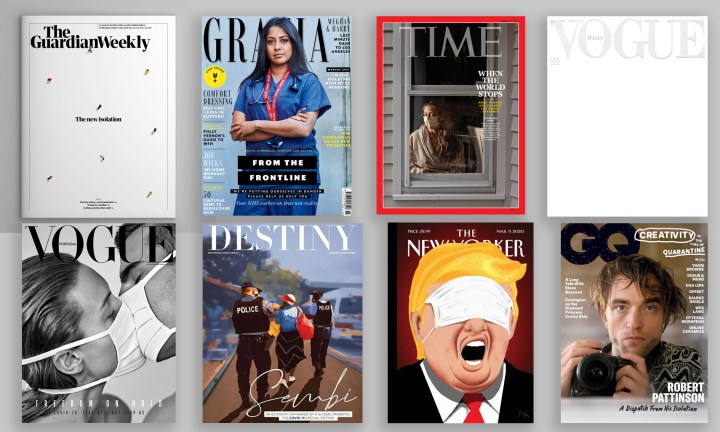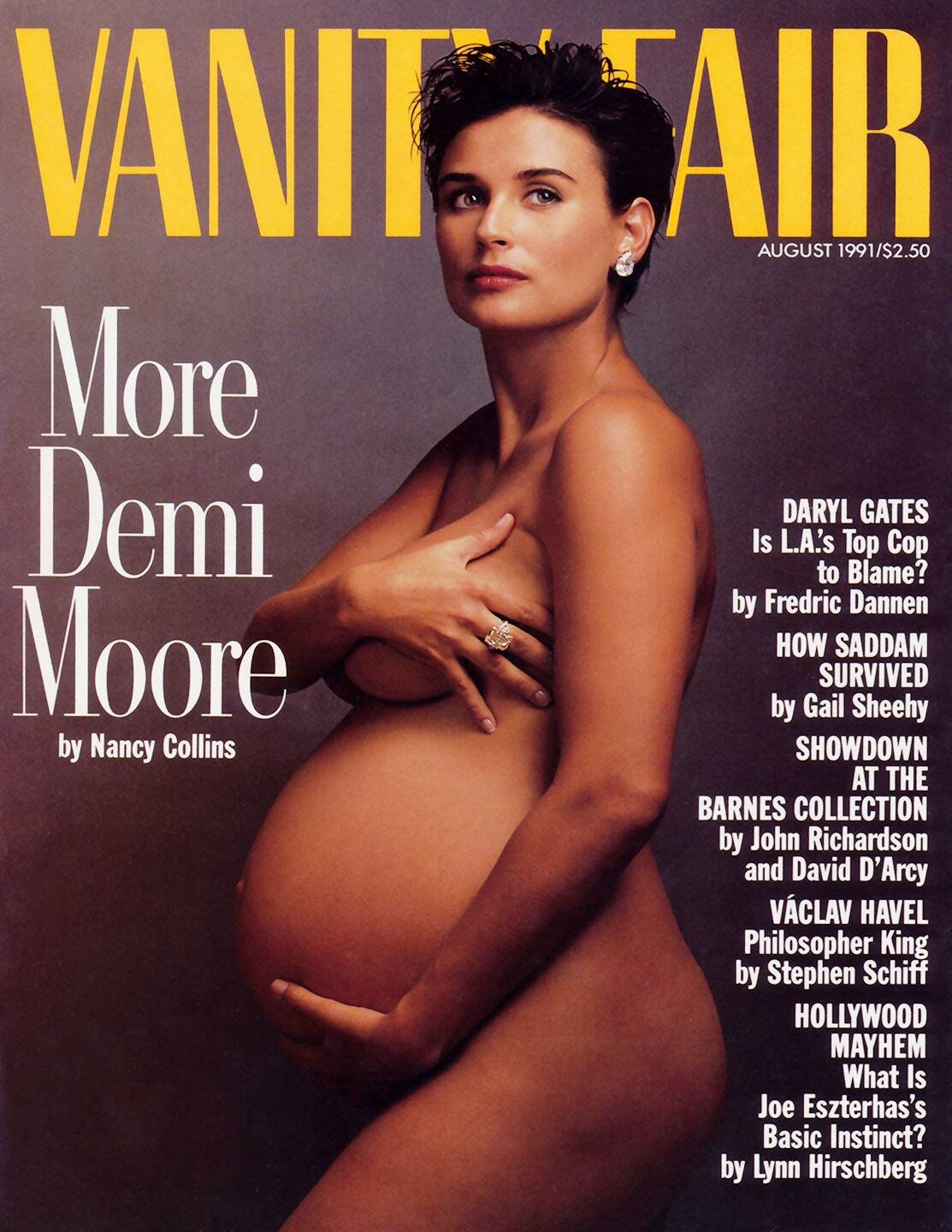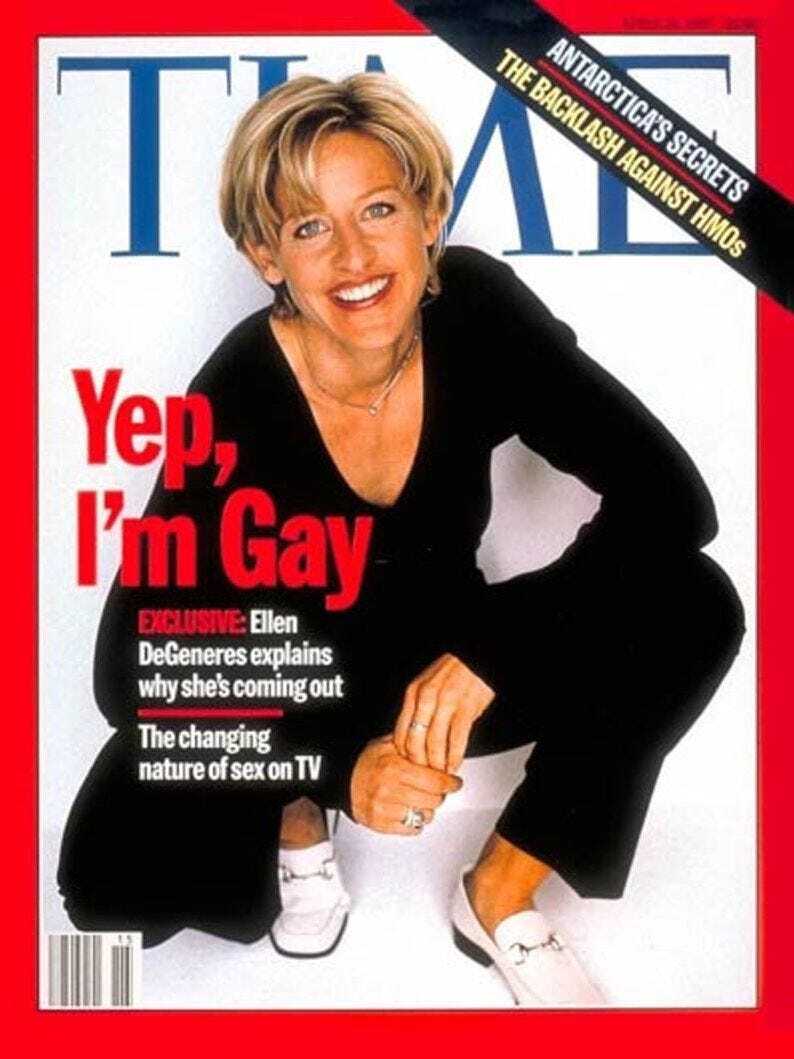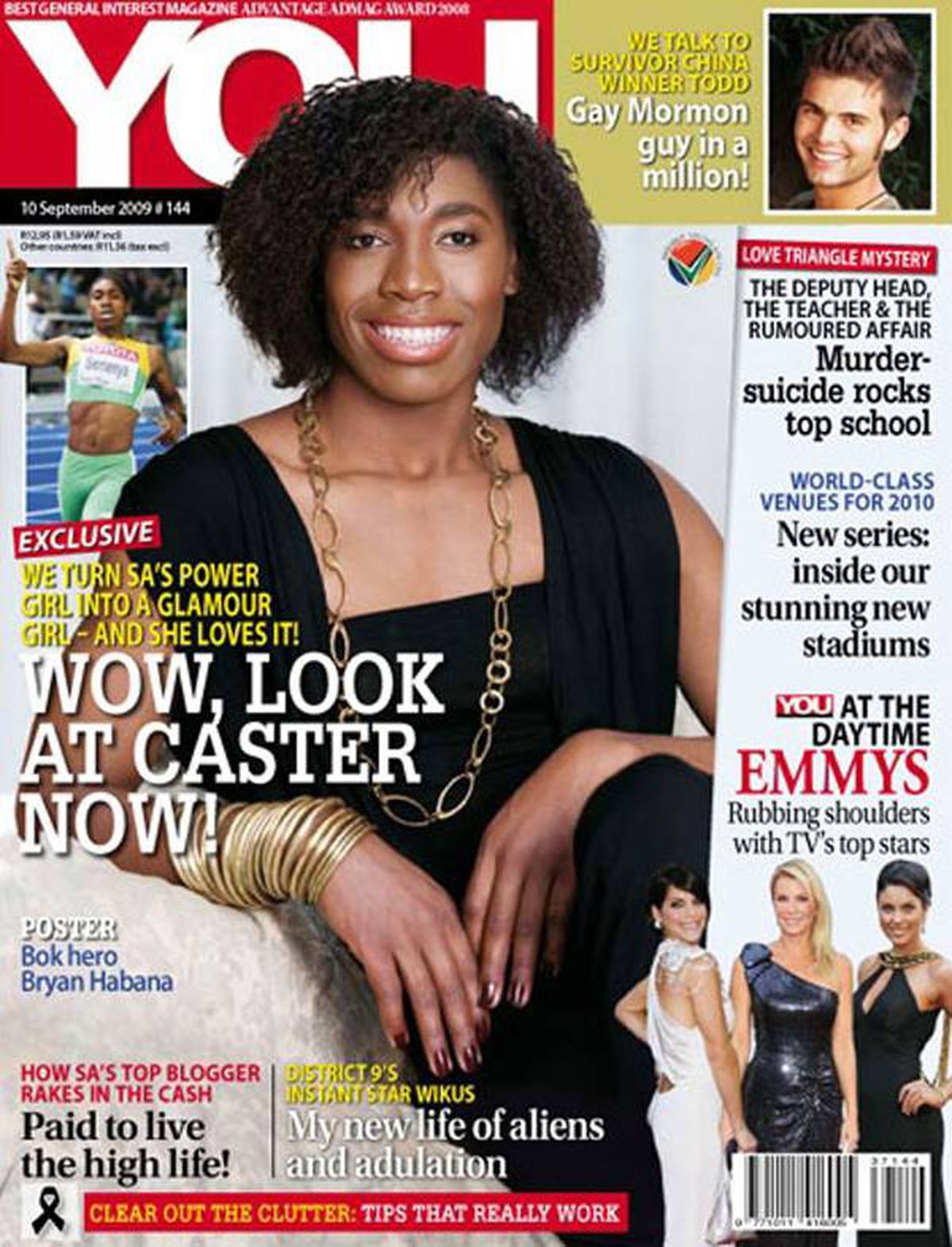Maverick Life
The magazines are dead. Long live their covers

Lockdown has seen several long-standing global and South African magazines shut down. But, as print publishing declines, what of the power of the cover image?
July 2005, Vogue Italia. The cover featured supermodel Linda Evangelista, seemingly being walked into – or out of – some sort of plastic surgery makeover hospital/hotel hybrid. Her head and neck covered in bandages – only her supermodel mug and big glasses visible.

The words ‘Makeover Madness’ splashed across the cover. The image was a sneak peak into the fashion editorial shot by Steven Meisel, a satirical look at the then growing obsession with plastic surgery among models and celebrities. It certainly was not revolutionary or world-changing photography and styling, but, for years, it was one of this writer’s absolute favourite covers and fashion shoots. Sadly, besides that cover image and the shoot it introduced, I can’t tell you what else was in that issue. Did I even read it?
There have certainly been far more influential, talked about, and consequential covers in the history of consumer magazines. The 1991 Vanity Fair cover of a nude and pregnant Demi Moore comes to mind. So controversial was the idea of a pregnant naked woman on the cover of a magazine, that Walmart refused to stock it. The issue went on to sell 1.2 million copies, 400,000 more than its usual 800,000.

“It’s one of my proudest things that we did for women, because it really liberated women from maternity clothes. And it also liberated women from a sense that pregnancy was something to be sort-of covered up,” says then editor Tina Brown in an interview with CNBC.
Looking at 2020 America through the lens of LGBQT equality, even with all the country’s current challenges, one might forget just how different things were in the 90s. When Ellen DeGeneres’s sitcom character, Ellen Morgan, came out in April 1997, it was a big deal. Sponsors JC Penney and Chrysler announced they would be pulling ads from the episode, and Wendy’s pulled ads from that as well as future episodes.
That moment in history has been quoted as key in the inclusion and representation of queer characters in television entertainment. Although the show was cancelled after one more season, the episode itself broke records and became the most watched episode of Ellen ever, attracting some 42 million viewers and numerous awards.
That same April, just two weeks prior to the airing of the episode, a Time magazine cover story came out featuring a smiling Ellen, with the words, “Yep, I’m gay” right there on the cover, creating further interest in that upcoming record-breaking episode, and proving public interest in a queer fictional character, as an openly queer celebrity on the cover of a magazine.

There have obviously been hundreds of thousands of consumer magazine covers around the world, and most would not have shifted culture in any way, nor are they meant to. The great and truly memorable magazine cover images of the past captured something of the zeitgeist, and arguably validated and cemented certain cultural shifts. But not all covers are memorable and some are for the wrong reasons, as sort of cautionary tales – reminders of where we wish never to tread again. The cringe-worthy YOU magazine cover of September 2009, that featured a dolled up Caster Semenya, her face covered in make-up, dressed up in questionable bling, with hairstyle to match. In capital letters, across the cover: “We Turn SA’s Power Girl into A Glamour Girl – And She Loves It! Wow Look at Caster Now!” That cover and its narrow and condescending view of the expression of femininity hasn’t aged well.

Magazines have also been challenged over the years for who they decide to feature. Lifestyle magazines, especially fashion glossies, have been especially notorious for decades of featuring mainly white skinny models, as well hiring overwhelmingly white teams behind the scenes, who then, predictably, reproduce a worldview that they are familiar with in the pages of the magazines. It is only in the last few years that diversity became a buzzword in the magazine industry. That was until the Internet turned the print world on its head, and with it, the relevance of women’s magazines.
Magazine circulation has dwindled over the past decade and some titles like Glamour US and Teen Vogue became strictly digital. Publishers like Hearst and Conde Nast have increasingly diversified their stable so as not to be too dependent on print publishing. According to Hearst CEO Steven Swartz, 40% of their profits now come from their new sets of businesses, like data gathering business Fitch bond rating, and software businesses like Homecare Homebase.
Then there’s their TV business: “Well, we’re predominantly a television company. We own 20% of ESPN, our fabulous partners at the Walt Disney Company own the rest. We and Disney co-own the A&E networks — largely the A&E Channel, the History Channel, and the Lifetime Channel — that’s a 50/50 partnership with Disney. And then we own 33 local television stations across the country — in Boston, Sacramento, Orlando, Florida —and roughly half of those are ABC. So, that’s also a strong Disney partnership,” says Swartz.
For some South African publishing houses, the shift hasn’t been so smooth. Already having to share a smaller pool of readers, reductions in sales and advertising revenue have annihilated one title after another. Just over a year ago, in January 2019, Khanyi Dhlomo’s Ndalo Media announced it was closing shop, just a mere 20 months after acquiring licences to publish ELLE and ELLE Decoration South Africa. A few months earlier, in October 2018, Associated Magazine Publishing, had also decided to stop publishing another international title, Marie Claire.
As of May 2020, Associated Magazine Publishing has permanently closed its doors after nearly 40 years in business. The last of its four surviving titles: Cosmopolitan, House and Leisure, Good Housekeeping, and Women on Wheels, gone for good, unless another brave publisher wishes to have a go at them.
“The unexpected and devastating impact of Covid-19, causing the closure of printing and distribution channels, the global halt on advertising spend as well as the inability to host events for the foreseeable future, have made it impossible to continue trading, despite large amounts of personal funds having gone into AMP,” said CEO Julia Raphaely.
Another local publisher, Caxton Magazines, also announced the closure of their magazine department in the wake of the coronavirus pandemic. Some 10 titles were affected, including South African favourites like Bona.
While the Covid-19 crisis was certainly the final nail in the coffin, the demise is not exactly a surprise. In their heyday, local editions of magazines like Cosmopolitan were selling some 250,000 units a month. Last year, according to the figures the publishers submitted to the Audit Bureau of Circulations (ABC), Cosmopolitan sold just below 35,000 units per month. Keep in mind that advertising spend has also been reduced as numbers have dwindled, with much of it going toward Facebook, Twitter as well as influencers.
With most monthly magazines produced and finalised two to three months before they hit the shelves, it is almost impossible for the format to match digital outlets in being able to speak to and reflect the times. Hence, even at this time, as the world confronts the quarantined reality, some covers seem out of step. Be they British Vogue’s current Rihanna cover, “Rebel! Rihanna Rewrites The Rules”, or Vogue US’s Gal Gadot cover, “From Supermom To Superhero, A Day In The Extraordinary Life Of Gal Gadot.”
Some, with shorter lead times, have been able to quickly respond to the moment with covers that reflect the mood. Be they magazines like Grazia, who have taken to featuring health workers on their covers, or Vogue Portugal’s masked models, Vogue Italia’s plain white cover, The Guardian’s Isolation cover, or the local title, Destiny’s Sembi cover. Some, in the interest of keeping the shoots going, have looked to photographers who cohabit with models to create shoots at home. Others have asked models and celebrities to shoot themselves at home, like Robert Pattinson’s self-shot cover and fashion editorial for GQ magazine’s June/July issue.

There’s no doubt that June/July will bring even more imaginative covers, reminding us of the power of the timely and carefully produced image, especially one that can sit on a shelf for a month, even long after the Instagram likes have dwindled. And yet, judging by the sales trends over the last decade, it would seem unlikely that cover imagery would be enough to turn the fortunes of consumer magazine publishing.
While a cover like the pregnant Moore’s 1991 Vanity Fair cover might have resulted in an additional 400,000 units being sold, these days, a provocative cover is more likely to result in a heightened social media buzz. And although that can be monetised, it is far trickier to make the same amount of money off digital content in comparison to what magazines could once charge for a page in the print edition.
For example, in 2018, the year that the South African edition of Marie Claire closed, and according to their rate card, the title could charge up to R98,000 for two pages of advertising content. Meanwhile, for equivalent content online, as well as the accompanying social media marketing of that content for an entire month, they could charge just up to R15,000.
As magazine sales continue to decline and advertising spend shrinks, the appetite for great storytelling and reporting is still strong. Thanks to the Internet, great stories are much easier to access (as are fakes ones), be they free or through relatively affordable subscription models. In this environment, even the most appealing covers cannot be depended on to guarantee that a readership, spoilt for choice, would spend money on a magazine in which they might appreciate only a couple of stories.
In the past some magazine covers provided moments that stopped us in our tracks – gave us reason to contemplate the state of culture, sometimes shocked us, enraged us, inspired us, drove us to read a story, and other stories within the magazine.
In a world now inundated with images – wrapped in likes, shares, posts, comments, scrolls – the power of the cover, the power of that moment, if not gone, has been greatly diminished.
Long live the covers. DM/ML
If you would like to share your thoughts with us, please leave a comment below or email us at [email protected] and [email protected].
Sign up for our newsletter to get the best of Maverick Life delivered to your inbox every Sunday morning.















 Become an Insider
Become an Insider